On “Breaking the Seal”…
Neriman Polat – Derya Yücel – Mahmut Wenda Koyuncu
October 2019, Istanbul
DY: I imagine your works as reflections of the relationship you form with the world. Departing from emotions, sensitivities and struggles constitute the foundation of your practice. How would we begin if we were to present a brief description of the pronounced theme(s), form(s) of production and material(s) in Neriman Polat’s artistic practice?
NP: I try to be a good observer. The works begin by observing both the outside world and my own inner world. Events, constructs and emotions, and the desire to bring them together. I perceive artistic production as a specific field of experience. The work and the subject matter determine the materials. Generally, the process or the form of thought determines the materials I will work with. Over the years, photography and video, and in recent years, fabrics and certain textile products have been my main materials, and this can change. I try to depart from the impact of the social, and to understand and transform this impact.
MWK: At this precise point, I would like to take a closer look at Derya’s question. I will say what I wanted to say at the end now, present you with a humble observation, and then ask a perhaps slightly personal question. Your works seem to me to include the building blocks of the collective unconscious, blocks that nurture cultural/social psychology. A bird’s-eye-view of a certain section of your works powerfully reveals structural issues: The problem of urbanization, ethnic and religious problems, the problem of gender... In your images, these issues spread across social and spatial layers. Children, women, workers, ethnic and religious groups, in brief, oppressed groups are presented in your works. We see, to put it bluntly, the ready-mades of the faults of a society that has failed to bring a full solution to its cultural, legal, social, administrative and economic problems, but pretends to have done so. They could also be described as the rock-heavy traces of cultural and social fragmentation. I read this as the spiritual congestion of a land experiencing a syndrome of modernization, or rather, the failure to modernize, and the ensuing frustration to overcome this failure. In other words, you don’t abstain from artistically engaging with deeper and heavier issues. In your works we bear witness to a plastic artistic regime that exposes the hypocrisy of cultural notions; challenging issues that everyone is aware of but no one speaks about; issues that are skirted around; that can never be spoken about; the shameful, undesirable, sensitive, prohibited or taboo. What’s more, looking at the works as a whole, and including your humouristic/ironic works, too, I can say that you want to point at the elephant in the room. In brief, your artistic practice involves an attitude which renders visible certain forms of failure or refusal to confront. And in fact, for me, two of your works seem like they hold the code of your artistic journey spreading out across many years: The Jellyfish video, and the works titled The Well, which you made in collaboration with Nurcan Gürdoğan, and exhibited at Kasa. There are almost twenty years between these two works! Jellyfish reveals an aspect of the impending danger that one does not want to see, while the passing time takes us to the head of The Well. The place you bring and leave us at is: A Well. And the well, in my view, allegorically, was a fact of Turkey, and pointed at the place you wanted to transport us to: To display the courage to look into the well! A puddle of muddy water at its bottom, the well, this crime scene scattered with evidence, indifferently progressed to turn into an anti-monument. And I ask myself, did it then show us where we currently stand? In other words, in this way, you manage to present, through a highly unique, integrated language, both the personal and the universal, without transporting them too further into the field of fiction.
Now, on to my question: What kind of a place is Turkey for an artist concerned about social/cultural/political issues? From which vantage point is artistic sensitivity constructed in a land where so many sinister events continue to take place in all their horror? With what sort of an attitude can one cope with this well of chaos? And where may we historically place your viewpoint in this context?
NP: I agree with the points you made, you have reminded me of many things, and I thank you for that. How does artistic production proceed in a society which refuses to confront its past? Does artistic sensitivity play any role at this point? When do personal experiences get to be shared, brought to the surface and included in artistic production? How can one exist without dissolving in this well of chaos? These are the kind of questions I generally struggle with. Questions and observations become part of the production. Sometimes, it matters less to find an answer, what counts is asking the question, or even looking at the question... In fact, it is difficult to work on many subjects in this country, whatever you touch, it is either a taboo, or even a crime. I investigate the boundaries of engagement, I often clash with these borders, and I try to flex my own boundaries. Sometimes the feeling it creates is too strong, and it can turn into anger. I strive to produce by refusing to escape from what I experience, what I feel, in other words, I try to confront the experience, the feeling. This does not mean that there is no self-censorship, that always seems to be operating somewhere in the depths. Nevertheless, I try to cope with that as well. It is not easy to exist in a field where the social and the personal intersect. As you also pointed out, the ebb-and-flow of a society trapped within its own adventure of modernism, the aesthetics it has formed and the constantly increasing violence in society are topics I dwell on. While the Jellyfish video I made many years ago displayed a more metaphorical and perhaps optimistic narrative, “Well” makes us feel violence in a much more intense manner, becoming an anti-monument. I also always try to bring up women’s murders, because it is a matter that is getting worse all the time.
DY: The political economy of violence is sometimes a direct, and at other times an indirect topic of your work. Your works, seen from a general perspective, establish a link with the load of social trauma and history, they point at the perpetrators, and in fact, seek to share the pain of victims, shaking us by casting us into the midst of these severe conditions we occupy. In “Her Mental and Physical Health Remains Stable” and also in “On Cutting”, we see both the victim and the perpetrator of violence, the female figure we observe carries us beyond the loss of justice, and creates an empathy towards sharing the pain of the disappeared. Or, by inscribing in our mind the inconceivable image of Ceylan’s mother’s words, you open a space for a common memory that shames conscience. In “Flower Wound” and “Belt” you transform the painful “trace” of violence targeting women into an indelibly powerful image. Your critical works on socially repressed or subordinated identities operate in the same manner not only against political phenomena, but also against ethical, ideological, conceptual or aesthetic phenomena. In this sense, I observe an expressionistic manner in your works. Your approach to production has been shaped like a visual warehouse, accompanied by social and individual seizures, attacks and crises. Its resonance is always intense but it can possess extreme anger, strange irony or joy. I used the term expressionist meaning this specific intensity that contains diversity.
NP: Capturing spontaneous expressions is, in fact, an act that shakes average taste, that’s what I have thought since my student days. Less fiction, more reality. However, in a work spread out across a long period of time, it becomes difficult to retain that expression. When images of social trauma and violence are part of my works, I try to perform that within a certain balance. To hold the intensity of emotion, but not to exploit the emotion –I carefully try to find that balance. I create my own methods so I can work without losing the feeling, or remaining open to its transformations. Irony, anger and joy are all important parts of life. Both my inner world, and the society we live in experience many ups and downs.
MWK: Although I agree with Derya’s perspective, I also perceive how, in your oeuvre, other forms of expressionism are at work. You seem to be more interested in the ways in which cultural symptoms construct and express themselves. You look at cemeteries, residential structures, kitsch forms of leisure and entertainment, visibility of forms of social resistance, the class and cultural codes of everyday objects; and the expressionistic forms of discrimination targeting women, children or ethnic/religious forms of existence. You occupy yourself with understanding, analysing them, and building accurate channels to express them in a plastic manner. We do not often see the the expression of the inner fragmentations of the artist as a solitary, flesh-and-blood figure, caused by her own psychological fluctuations.
NP: No. I empathize with the social, when something happens to someone, I feel as if it has happened to me. Not that it doesn’t, it actually does. I look at the city I live in, at women, children, the increasing violence, the degeneration, at patriarchal codes, and our modernization process. How do they operate, how do they become visible, and what do they lead to? I produce works through a research method I have developed myself. I am interested in deciphering cultural codes, and how gender codes shape our lives. But I treat these subjects not via a documentarist approach, but, as Derya pointed out, through a form of expressionism, without eliminating emotions, and nevertheless trying to use a plain language.
DY: Precisely for this reason, I had said before that your practice operates in the same manner not only against political phenomena, but also against ethical, ideological, conceptual or aesthetic phenomena. In your almost-thirty-year-long work life, I see you retain your distance to the “popular” or “fashionable” of the day in your plastic language. Your plastic language is not documentary, but displays, I think, the attitude of an image collector. It comes from your eye, your feelings, your visual codes filter through, but the meaning of the image, or its associations, are not forced, the approach spontaneously constructs itself. In this sense, “Blondes”, “Spoilt”, “Two Partridges”, “The City Series”, “Burkini” and “House-Grave” are works that provide clues as to how this visual image warehouse operates. What’s more, rather than directly pointing at issues that could perhaps be divulged in one go, you make the viewer sense them through links you establish between works. Besides, you do this in an effective manner, by using different symbols, or displacements. For instance, in “To Take a Step”, there is a “woman”, still a young girl, who has shown the courage to leave, to go outside, to look and to severe her ties with the family. Or in your photographs where you point to the formal similarity between a cemetery and the entrance of an apartment block, and use this similarity as a metaphor, and the installation which references them... What can you say about your use of both a direct and mediated language in your works?
NP: I want to look at what has been kept secret, what has been concealed, and also to the invisible aspects of the seemingly evident. To study symbols and codes, and to focus on changes in meanings when displacements and decontextualizations are applied, to look at new meanings. Or to look at taboos. Especially in the context of gender, my personal journey, too, the codes I have challenged or developed to emancipate myself, or to struggle against repression are naturally reflected in my works. Some of my works issue a direct message, and underline the fact that they have to be so. Some works are more metaphorical than others, they need more of an effort on the viewer’s side. Relations, contexts and allusions are no doubt very important.
DY: In many of your works “woman” is the main protagonist. So I also find autobiographical traces in the foundation of your works. In your works, we see you as a critical, sensitive, challenging, determined woman artist who keeps he distance to the “system”. How is your identity reflected in your works? How would you describe the contact and/or distance between your works and your personal identity?
NP: My identity, or identities are no doubt reflected in my works. I try to tell the story the way I know it, see it, the way I have somehow witnessed it, in my own language, using the forms I have researched. This is the desire to understand the things I have felt most intensely. This involves both empathy and an effort. To render this part of the work I carry out by keeping a certain distance. Often there are women and children in my works. I try to look at objects and events in a different way than what I have been taught. I keep my distance to the system, because I question it, I do not want to be manipulated. I believe in taking responsibility of the works I create, and that’s not easy.
MWK: I would like to add a little to this accurate consideration Derya just made on your relationship with the system. You are one of the most important creators and witnesses of conceptual art and contemporary art practices that developed in Turkey from the 90s on and became widespread forms of production. As far as I know, you were in contact with an important initiative that at an early stage, preoccupied itself with conceptual art. I am talking about Sanat Tanımı Topluluğu (STT) [The Definition of Art Group]. And although it is no longer directly referenced by practices caught up in the whirlpool of contemporary art, the influence of conceptual art remains widespread. From the 1960s on, conceptual art represented a significant refraction in the course of art. This refraction also led to a significant challenge in terms of shattering the perception of established artistic production and circulation dynamics. Conceptual art appeared as an approach that prioritized reason and thought, and pushed back the aesthetic emphasis and the concern over the market. There were similar approaches before, Dada, for instance... But conceptual art carried out a powerful intervention to create space for the critique of the aforementioned subjects. It is also possible to see the influence of this approach in your works. What I would like to know is, regarding your highly-charged relationship with the current system, did the STT, or in a broader sense, this approach, play a role? I ask this question in the context of the relationship between art and capital.
NP: I graduated from the Department of Painting in 1990. And I immediately joined Sanat Tanımı Topluluğu. The reason for this was my suspicion of the art market during that time. I sought different sources of nutrition. So STT had an important place in my life, as a place where philosophy and artistic context was discussed, and conceptual art was practiced. On the one hand, I had begun to work as a teacher of painting within the National Education system; on the other hand, I was a member of a group carrying out research on conceptual art. This lasted 3 or 4 years... I learned a lot, no doubt about it, but I left thinking that I could not have my own personal say there, and that I had to find my own path. And then I began to produce my first works using photography in a conceptual context. The relationship between art and capital was already a problem I focused on during my student years, even before I joined STT. I always looked to the world, asking “How can I emancipate myself further?” and that remains the path I continue to follow. This, in fact, is closely linked to the relationship between art and capital, because I choose my subject matter by my own will, not thinking whether it will sell, or whether it is trendy. I don’t want others to decide on my behalf.
MWK: You have also collaborated with many artists. In fact, you have also produced, or been part of anonymous works. And you have not held back from getting involved in political issues like an activist. When we look at your oeuvre, it is as if a plural/collective spirit is wandering among the works. Those who know you personally know very well that you have always been inclined towards producing together, and taking a collective stance. You were a member of Hafriyat, an art collective. When discussing the soul of artistic position in the 90s and beyond, the Hafriyat collective is accepted as an important reference point, an exceptional example in the art historical sense. You were a member of this collective for many years, and you experienced, in the closest manner, the meaning of collective production, solidarity and sharing. You never were the kind of artist that perceived the world only as her or his temple (the studio). I discussed the example of STT above, and then comes the Hafriyat period. I frankly find it quite interesting for an artist to be so close to collective production, and at the same time build her own subjectivity. And I say it for all the artists from the Hafriyat tradition. Each one of them has created their own story, in their own unique languages. What I am curious about is, what did collectivity bring you, do you see any reflections of this in your work –or in other words, what does a collective mean for an artist?
NP: I think that all artists working today should consider what it means to participate in collective work. And not only in the context of artistic production, of course. As problems erupt all across the world, is it possible not to react to artists who build their careers in their own corners? I believe in collective production, solidarity, and in growing together, without excluding individuality. That’s why I have always been part of groups, collectives and initiatives. And they added a lot to me. I had real experiences, I learned how to work collectively, I enriched my ideas. After I left STT, the “Arada” [“In Between”] group we founded as 4 woman artists (Gül Ilgaz, Nancy Atakan, Gülçin Aksoy), Hafriyat, the group I was a member of from 2000 to 2009, the exhibition space the group opened, Hafriyat Karaköy. For me, they are like schools I have graduated from. Again, in recent years, our collaborations on feminist works with Arzu Yayıntaş have become an important part of my life. Meeting with feminist organizations and frequently collaborating with them is also part of the process. Most recently, we produced “The Well” with Nurdan Gürdoğan. I want activist works and collaborations to be, along with my individual works, to always be in my life, and part of my artistic production.
DY: In fact, I perceive the practice of coming together within an artistic collectivity as a strategic choice in every sense: whether it is for intellectual reasons, or ideological and action-based, and even if it is motivated by producing new works. Collectivity in the field of art has created and continues to create autonomous fields, questioning through which methods the system and the means of production can be altered, which strategies can be adopted in public space, which alternative forms can be created, and the impact of them all. So Neriman’s experience of collectivity operated as a different channel, from STT to “Arada”, and from Hafriyat to works involving collaborations of two artists, where a common locus of resistance was chosen as the departure point, where common goals were determined, and the will to remain outside the mainstream and the dominant displayed itself via “collaboration”, and it continues to do so... Other than “The Well”, works such as “Bitter Coffee”, “Stable Death”, “Gülşah’s Letter” and “Without Hat” are just a few of them.
MWK: You are a relatively young artist, but I am witness to the fact that you have produced a lot of works in total. You have many new works in your studio, and you have a significant number of works in many collections. Yet isn’t the idea of a retrospective exhibition a risk at such an early age? Why did you want to hold a retrospective exhibition?
NP: I perceive this exhibition more as an exhibition of remembering, of memory, rather than a retrospective. The exhibition reveals a non-chronological sequence, genealogy of concepts across the works. This was formed through a curatorial view. You and Derya’s viewpoint revealed the connections. This, for me, means the idea of a new exhibition, it excites me. I also think that the works of the artists of my own generation need to be seen collectively. Depo invited me as a guest, and it honours me to exhibit within this institution that hosts different, alternative voices from the art scene.
DY: Keeping in mind the sincere, uncalculated and spontaneous approach we have observed in your practice since the 1990s, I would like to ask what you can say about the trajectory of your production from now on?
NP: I believe there is a path that I follow, the tempo may change but the path remains the same, and I continue to walk on. Subjects bring along new subjects; questions give rise to new questions. There is a certain condition of acting alone brought on by this period, but I believe we have to shed that.
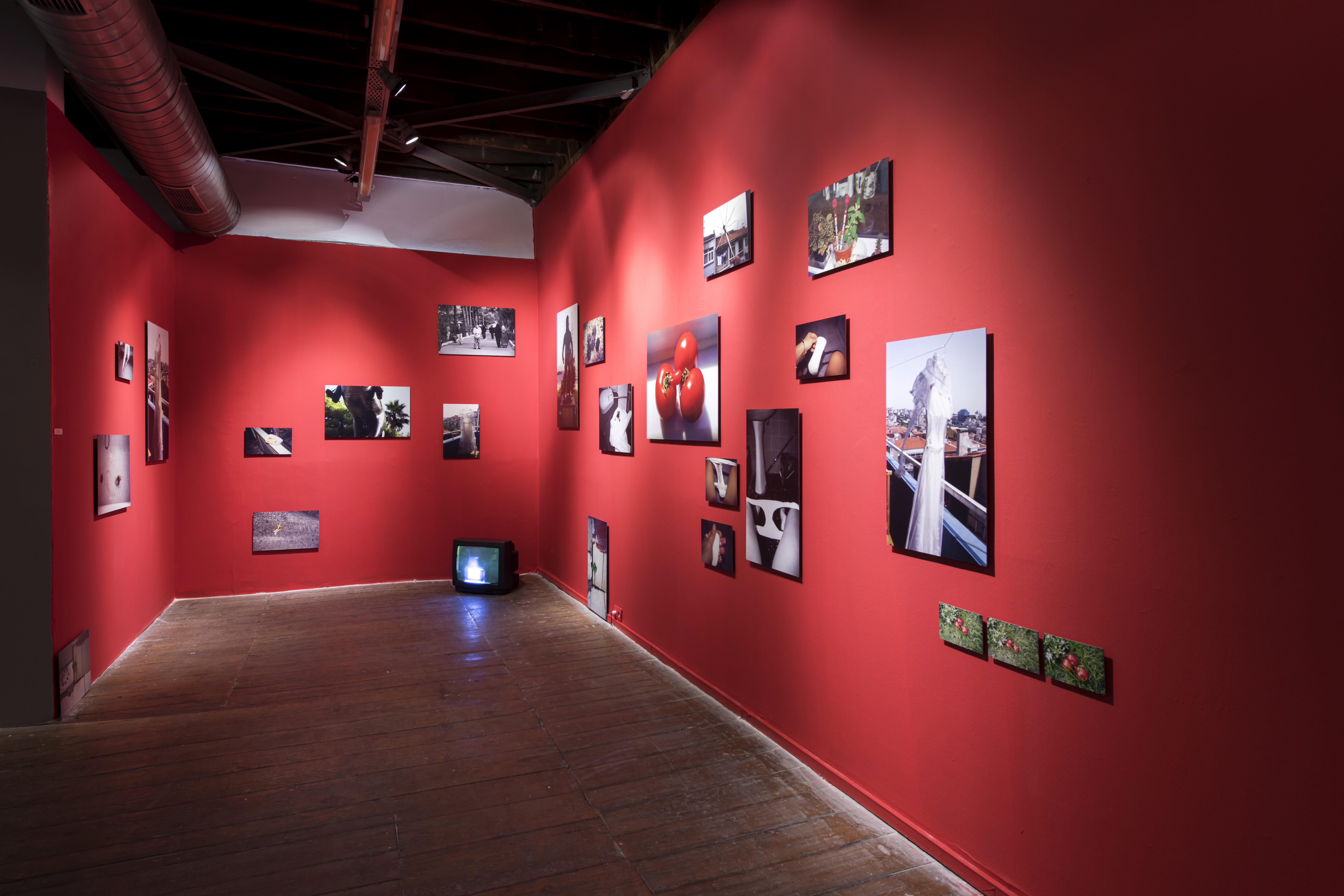
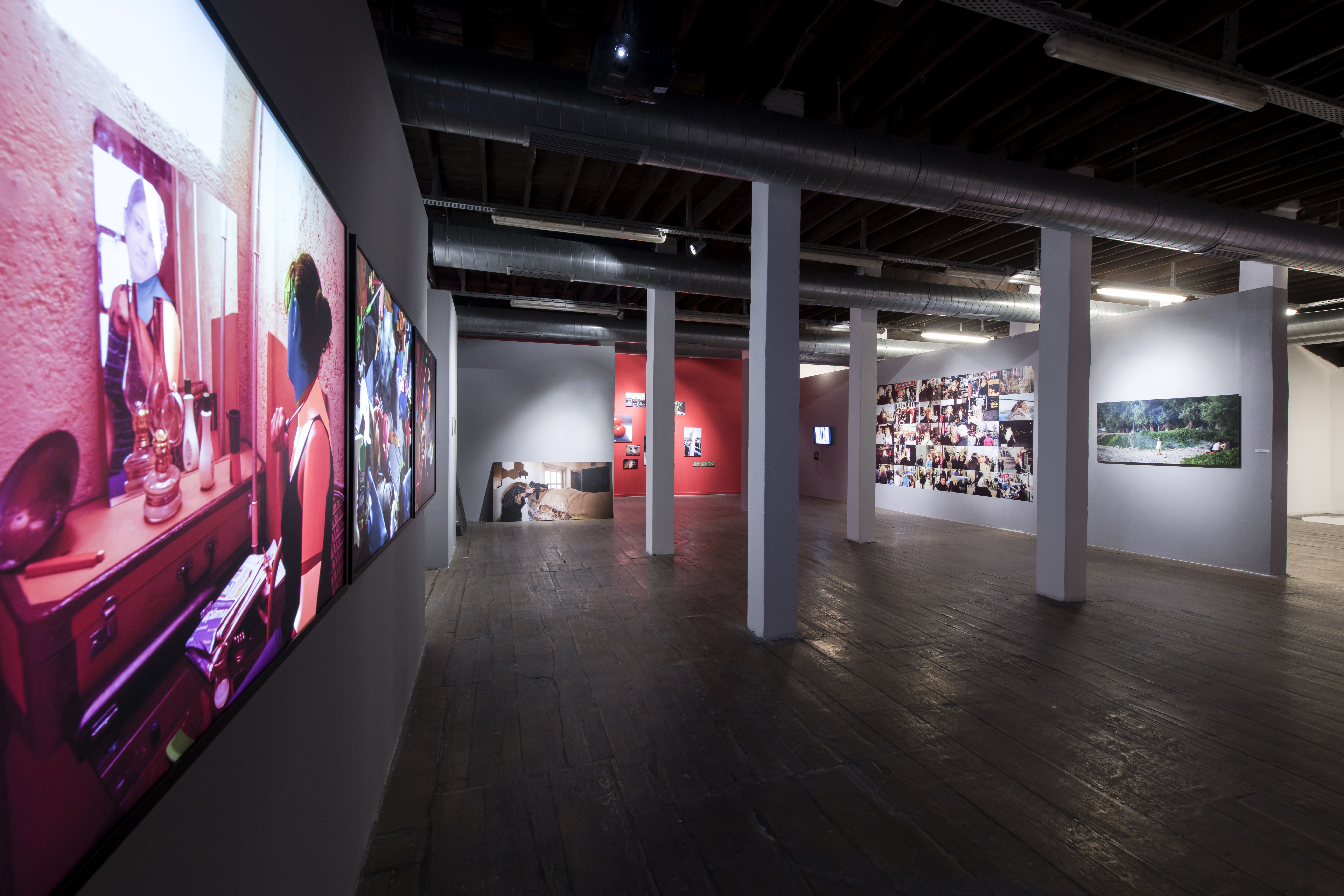
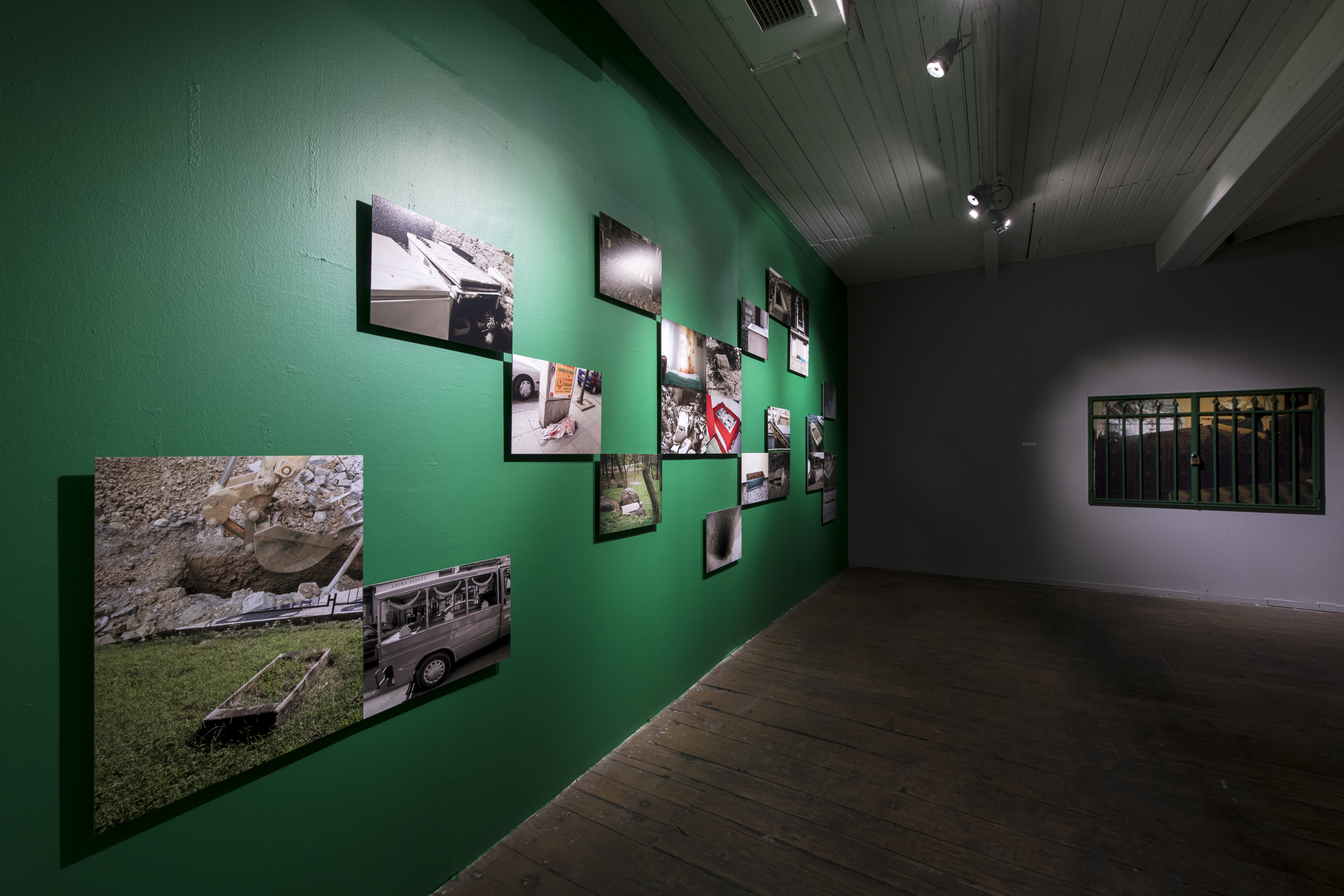
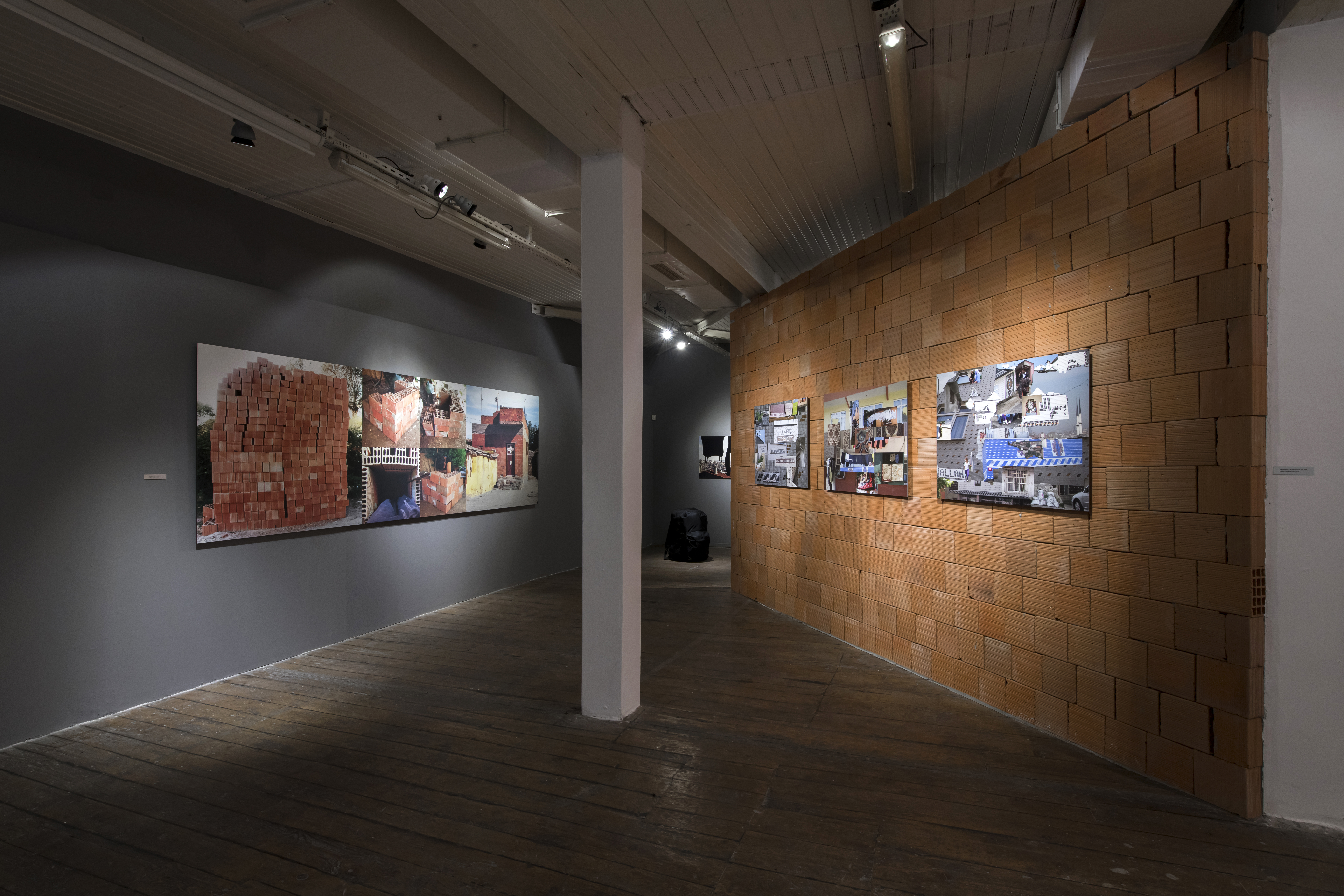
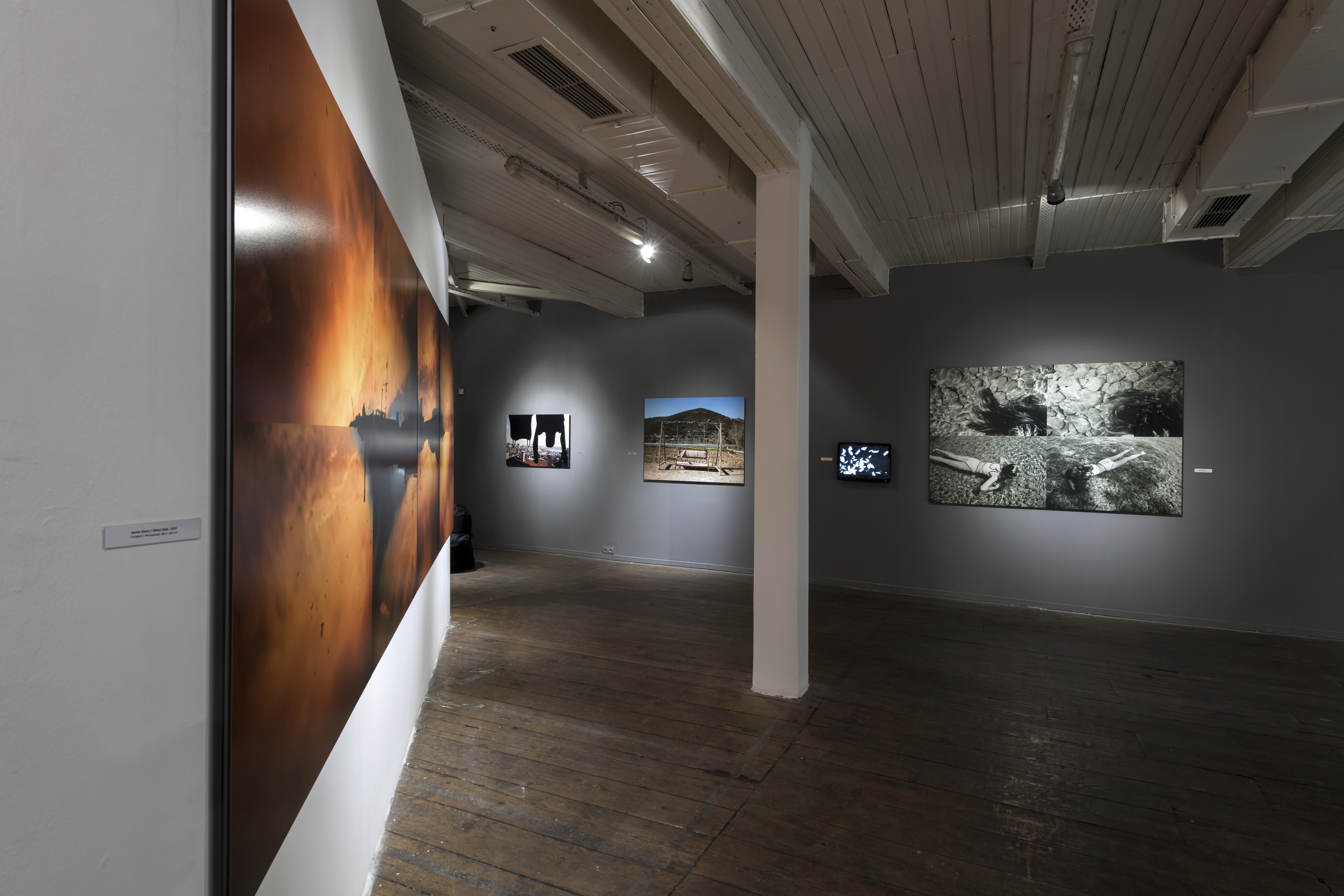
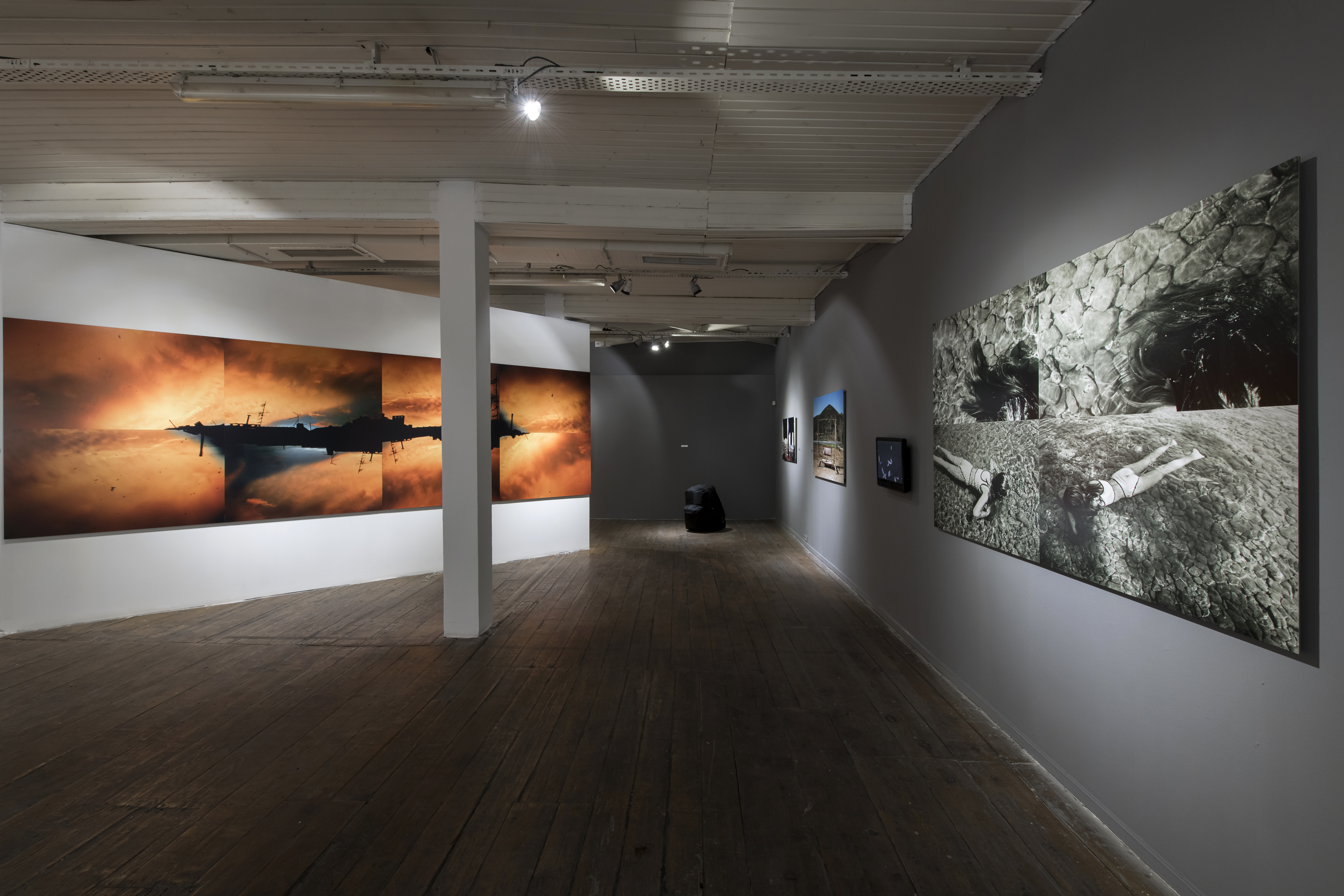
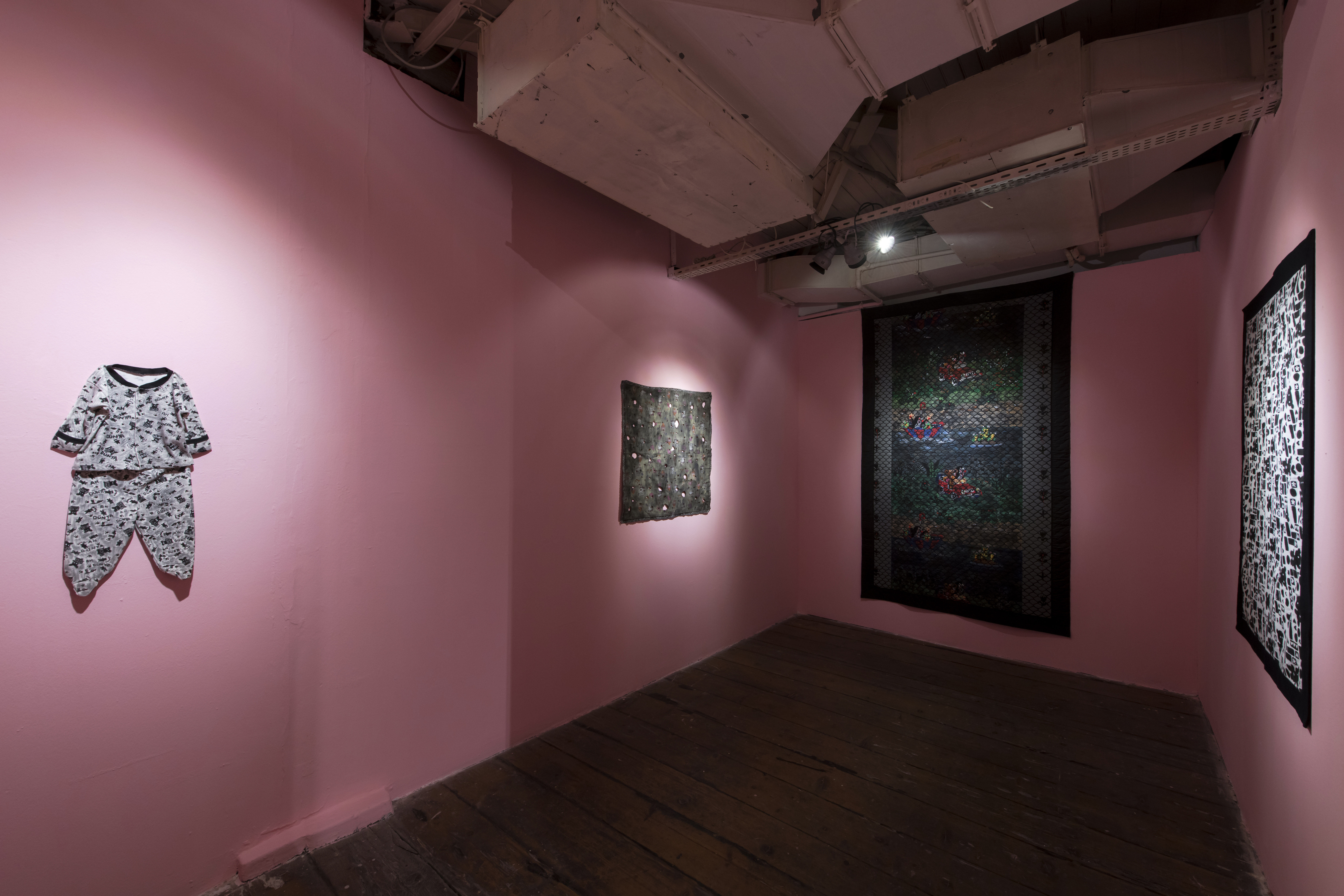
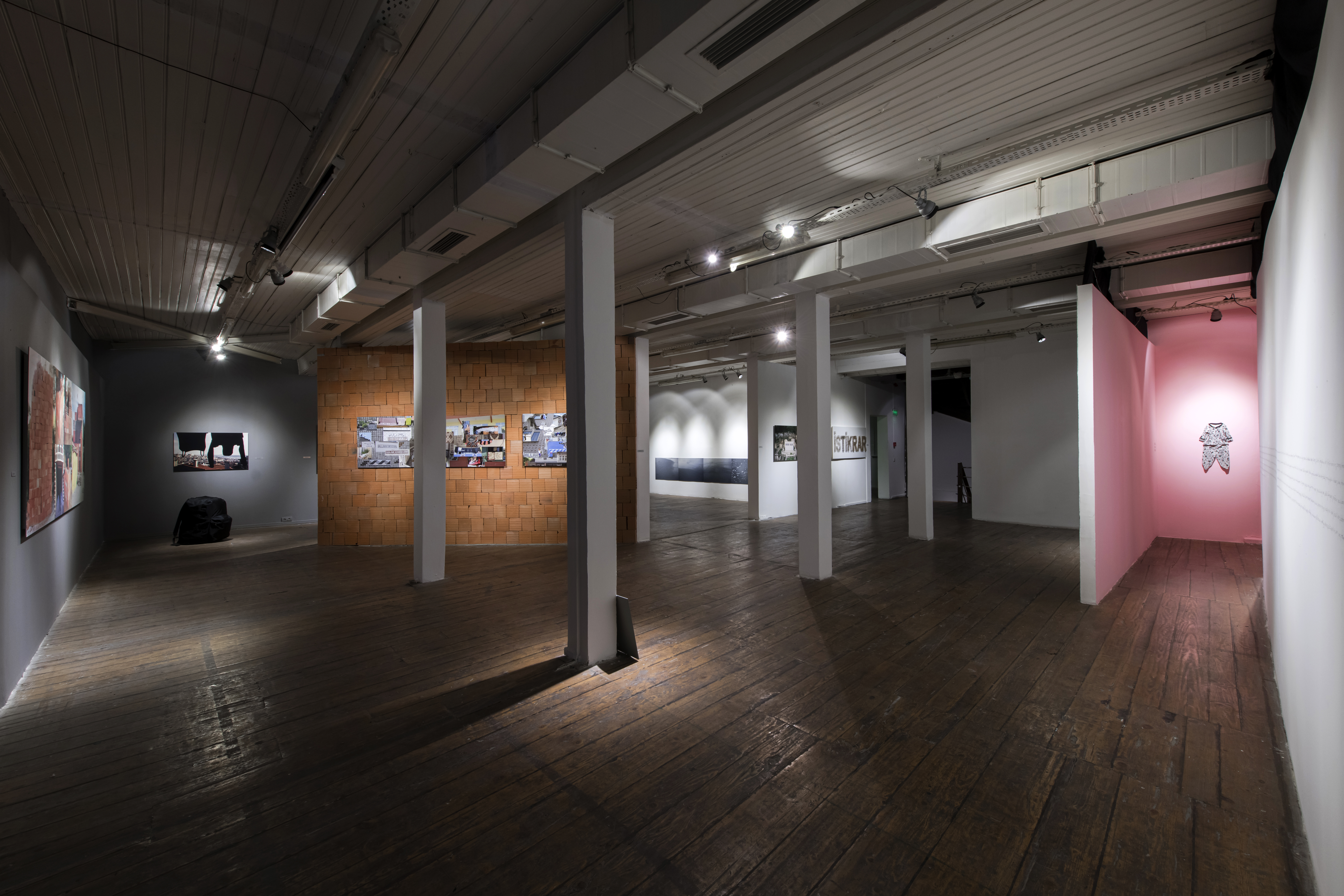
Neriman Polat – Derya Yücel – Mahmut Wenda Koyuncu
October 2019, Istanbul
DY: I imagine your works as reflections of the relationship you form with the world. Departing from emotions, sensitivities and struggles constitute the foundation of your practice. How would we begin if we were to present a brief description of the pronounced theme(s), form(s) of production and material(s) in Neriman Polat’s artistic practice?
NP: I try to be a good observer. The works begin by observing both the outside world and my own inner world. Events, constructs and emotions, and the desire to bring them together. I perceive artistic production as a specific field of experience. The work and the subject matter determine the materials. Generally, the process or the form of thought determines the materials I will work with. Over the years, photography and video, and in recent years, fabrics and certain textile products have been my main materials, and this can change. I try to depart from the impact of the social, and to understand and transform this impact.
MWK: At this precise point, I would like to take a closer look at Derya’s question. I will say what I wanted to say at the end now, present you with a humble observation, and then ask a perhaps slightly personal question. Your works seem to me to include the building blocks of the collective unconscious, blocks that nurture cultural/social psychology. A bird’s-eye-view of a certain section of your works powerfully reveals structural issues: The problem of urbanization, ethnic and religious problems, the problem of gender... In your images, these issues spread across social and spatial layers. Children, women, workers, ethnic and religious groups, in brief, oppressed groups are presented in your works. We see, to put it bluntly, the ready-mades of the faults of a society that has failed to bring a full solution to its cultural, legal, social, administrative and economic problems, but pretends to have done so. They could also be described as the rock-heavy traces of cultural and social fragmentation. I read this as the spiritual congestion of a land experiencing a syndrome of modernization, or rather, the failure to modernize, and the ensuing frustration to overcome this failure. In other words, you don’t abstain from artistically engaging with deeper and heavier issues. In your works we bear witness to a plastic artistic regime that exposes the hypocrisy of cultural notions; challenging issues that everyone is aware of but no one speaks about; issues that are skirted around; that can never be spoken about; the shameful, undesirable, sensitive, prohibited or taboo. What’s more, looking at the works as a whole, and including your humouristic/ironic works, too, I can say that you want to point at the elephant in the room. In brief, your artistic practice involves an attitude which renders visible certain forms of failure or refusal to confront. And in fact, for me, two of your works seem like they hold the code of your artistic journey spreading out across many years: The Jellyfish video, and the works titled The Well, which you made in collaboration with Nurcan Gürdoğan, and exhibited at Kasa. There are almost twenty years between these two works! Jellyfish reveals an aspect of the impending danger that one does not want to see, while the passing time takes us to the head of The Well. The place you bring and leave us at is: A Well. And the well, in my view, allegorically, was a fact of Turkey, and pointed at the place you wanted to transport us to: To display the courage to look into the well! A puddle of muddy water at its bottom, the well, this crime scene scattered with evidence, indifferently progressed to turn into an anti-monument. And I ask myself, did it then show us where we currently stand? In other words, in this way, you manage to present, through a highly unique, integrated language, both the personal and the universal, without transporting them too further into the field of fiction.
Now, on to my question: What kind of a place is Turkey for an artist concerned about social/cultural/political issues? From which vantage point is artistic sensitivity constructed in a land where so many sinister events continue to take place in all their horror? With what sort of an attitude can one cope with this well of chaos? And where may we historically place your viewpoint in this context?
NP: I agree with the points you made, you have reminded me of many things, and I thank you for that. How does artistic production proceed in a society which refuses to confront its past? Does artistic sensitivity play any role at this point? When do personal experiences get to be shared, brought to the surface and included in artistic production? How can one exist without dissolving in this well of chaos? These are the kind of questions I generally struggle with. Questions and observations become part of the production. Sometimes, it matters less to find an answer, what counts is asking the question, or even looking at the question... In fact, it is difficult to work on many subjects in this country, whatever you touch, it is either a taboo, or even a crime. I investigate the boundaries of engagement, I often clash with these borders, and I try to flex my own boundaries. Sometimes the feeling it creates is too strong, and it can turn into anger. I strive to produce by refusing to escape from what I experience, what I feel, in other words, I try to confront the experience, the feeling. This does not mean that there is no self-censorship, that always seems to be operating somewhere in the depths. Nevertheless, I try to cope with that as well. It is not easy to exist in a field where the social and the personal intersect. As you also pointed out, the ebb-and-flow of a society trapped within its own adventure of modernism, the aesthetics it has formed and the constantly increasing violence in society are topics I dwell on. While the Jellyfish video I made many years ago displayed a more metaphorical and perhaps optimistic narrative, “Well” makes us feel violence in a much more intense manner, becoming an anti-monument. I also always try to bring up women’s murders, because it is a matter that is getting worse all the time.
DY: The political economy of violence is sometimes a direct, and at other times an indirect topic of your work. Your works, seen from a general perspective, establish a link with the load of social trauma and history, they point at the perpetrators, and in fact, seek to share the pain of victims, shaking us by casting us into the midst of these severe conditions we occupy. In “Her Mental and Physical Health Remains Stable” and also in “On Cutting”, we see both the victim and the perpetrator of violence, the female figure we observe carries us beyond the loss of justice, and creates an empathy towards sharing the pain of the disappeared. Or, by inscribing in our mind the inconceivable image of Ceylan’s mother’s words, you open a space for a common memory that shames conscience. In “Flower Wound” and “Belt” you transform the painful “trace” of violence targeting women into an indelibly powerful image. Your critical works on socially repressed or subordinated identities operate in the same manner not only against political phenomena, but also against ethical, ideological, conceptual or aesthetic phenomena. In this sense, I observe an expressionistic manner in your works. Your approach to production has been shaped like a visual warehouse, accompanied by social and individual seizures, attacks and crises. Its resonance is always intense but it can possess extreme anger, strange irony or joy. I used the term expressionist meaning this specific intensity that contains diversity.
NP: Capturing spontaneous expressions is, in fact, an act that shakes average taste, that’s what I have thought since my student days. Less fiction, more reality. However, in a work spread out across a long period of time, it becomes difficult to retain that expression. When images of social trauma and violence are part of my works, I try to perform that within a certain balance. To hold the intensity of emotion, but not to exploit the emotion –I carefully try to find that balance. I create my own methods so I can work without losing the feeling, or remaining open to its transformations. Irony, anger and joy are all important parts of life. Both my inner world, and the society we live in experience many ups and downs.
MWK: Although I agree with Derya’s perspective, I also perceive how, in your oeuvre, other forms of expressionism are at work. You seem to be more interested in the ways in which cultural symptoms construct and express themselves. You look at cemeteries, residential structures, kitsch forms of leisure and entertainment, visibility of forms of social resistance, the class and cultural codes of everyday objects; and the expressionistic forms of discrimination targeting women, children or ethnic/religious forms of existence. You occupy yourself with understanding, analysing them, and building accurate channels to express them in a plastic manner. We do not often see the the expression of the inner fragmentations of the artist as a solitary, flesh-and-blood figure, caused by her own psychological fluctuations.
NP: No. I empathize with the social, when something happens to someone, I feel as if it has happened to me. Not that it doesn’t, it actually does. I look at the city I live in, at women, children, the increasing violence, the degeneration, at patriarchal codes, and our modernization process. How do they operate, how do they become visible, and what do they lead to? I produce works through a research method I have developed myself. I am interested in deciphering cultural codes, and how gender codes shape our lives. But I treat these subjects not via a documentarist approach, but, as Derya pointed out, through a form of expressionism, without eliminating emotions, and nevertheless trying to use a plain language.
DY: Precisely for this reason, I had said before that your practice operates in the same manner not only against political phenomena, but also against ethical, ideological, conceptual or aesthetic phenomena. In your almost-thirty-year-long work life, I see you retain your distance to the “popular” or “fashionable” of the day in your plastic language. Your plastic language is not documentary, but displays, I think, the attitude of an image collector. It comes from your eye, your feelings, your visual codes filter through, but the meaning of the image, or its associations, are not forced, the approach spontaneously constructs itself. In this sense, “Blondes”, “Spoilt”, “Two Partridges”, “The City Series”, “Burkini” and “House-Grave” are works that provide clues as to how this visual image warehouse operates. What’s more, rather than directly pointing at issues that could perhaps be divulged in one go, you make the viewer sense them through links you establish between works. Besides, you do this in an effective manner, by using different symbols, or displacements. For instance, in “To Take a Step”, there is a “woman”, still a young girl, who has shown the courage to leave, to go outside, to look and to severe her ties with the family. Or in your photographs where you point to the formal similarity between a cemetery and the entrance of an apartment block, and use this similarity as a metaphor, and the installation which references them... What can you say about your use of both a direct and mediated language in your works?
NP: I want to look at what has been kept secret, what has been concealed, and also to the invisible aspects of the seemingly evident. To study symbols and codes, and to focus on changes in meanings when displacements and decontextualizations are applied, to look at new meanings. Or to look at taboos. Especially in the context of gender, my personal journey, too, the codes I have challenged or developed to emancipate myself, or to struggle against repression are naturally reflected in my works. Some of my works issue a direct message, and underline the fact that they have to be so. Some works are more metaphorical than others, they need more of an effort on the viewer’s side. Relations, contexts and allusions are no doubt very important.
DY: In many of your works “woman” is the main protagonist. So I also find autobiographical traces in the foundation of your works. In your works, we see you as a critical, sensitive, challenging, determined woman artist who keeps he distance to the “system”. How is your identity reflected in your works? How would you describe the contact and/or distance between your works and your personal identity?
NP: My identity, or identities are no doubt reflected in my works. I try to tell the story the way I know it, see it, the way I have somehow witnessed it, in my own language, using the forms I have researched. This is the desire to understand the things I have felt most intensely. This involves both empathy and an effort. To render this part of the work I carry out by keeping a certain distance. Often there are women and children in my works. I try to look at objects and events in a different way than what I have been taught. I keep my distance to the system, because I question it, I do not want to be manipulated. I believe in taking responsibility of the works I create, and that’s not easy.
MWK: I would like to add a little to this accurate consideration Derya just made on your relationship with the system. You are one of the most important creators and witnesses of conceptual art and contemporary art practices that developed in Turkey from the 90s on and became widespread forms of production. As far as I know, you were in contact with an important initiative that at an early stage, preoccupied itself with conceptual art. I am talking about Sanat Tanımı Topluluğu (STT) [The Definition of Art Group]. And although it is no longer directly referenced by practices caught up in the whirlpool of contemporary art, the influence of conceptual art remains widespread. From the 1960s on, conceptual art represented a significant refraction in the course of art. This refraction also led to a significant challenge in terms of shattering the perception of established artistic production and circulation dynamics. Conceptual art appeared as an approach that prioritized reason and thought, and pushed back the aesthetic emphasis and the concern over the market. There were similar approaches before, Dada, for instance... But conceptual art carried out a powerful intervention to create space for the critique of the aforementioned subjects. It is also possible to see the influence of this approach in your works. What I would like to know is, regarding your highly-charged relationship with the current system, did the STT, or in a broader sense, this approach, play a role? I ask this question in the context of the relationship between art and capital.
NP: I graduated from the Department of Painting in 1990. And I immediately joined Sanat Tanımı Topluluğu. The reason for this was my suspicion of the art market during that time. I sought different sources of nutrition. So STT had an important place in my life, as a place where philosophy and artistic context was discussed, and conceptual art was practiced. On the one hand, I had begun to work as a teacher of painting within the National Education system; on the other hand, I was a member of a group carrying out research on conceptual art. This lasted 3 or 4 years... I learned a lot, no doubt about it, but I left thinking that I could not have my own personal say there, and that I had to find my own path. And then I began to produce my first works using photography in a conceptual context. The relationship between art and capital was already a problem I focused on during my student years, even before I joined STT. I always looked to the world, asking “How can I emancipate myself further?” and that remains the path I continue to follow. This, in fact, is closely linked to the relationship between art and capital, because I choose my subject matter by my own will, not thinking whether it will sell, or whether it is trendy. I don’t want others to decide on my behalf.
MWK: You have also collaborated with many artists. In fact, you have also produced, or been part of anonymous works. And you have not held back from getting involved in political issues like an activist. When we look at your oeuvre, it is as if a plural/collective spirit is wandering among the works. Those who know you personally know very well that you have always been inclined towards producing together, and taking a collective stance. You were a member of Hafriyat, an art collective. When discussing the soul of artistic position in the 90s and beyond, the Hafriyat collective is accepted as an important reference point, an exceptional example in the art historical sense. You were a member of this collective for many years, and you experienced, in the closest manner, the meaning of collective production, solidarity and sharing. You never were the kind of artist that perceived the world only as her or his temple (the studio). I discussed the example of STT above, and then comes the Hafriyat period. I frankly find it quite interesting for an artist to be so close to collective production, and at the same time build her own subjectivity. And I say it for all the artists from the Hafriyat tradition. Each one of them has created their own story, in their own unique languages. What I am curious about is, what did collectivity bring you, do you see any reflections of this in your work –or in other words, what does a collective mean for an artist?
NP: I think that all artists working today should consider what it means to participate in collective work. And not only in the context of artistic production, of course. As problems erupt all across the world, is it possible not to react to artists who build their careers in their own corners? I believe in collective production, solidarity, and in growing together, without excluding individuality. That’s why I have always been part of groups, collectives and initiatives. And they added a lot to me. I had real experiences, I learned how to work collectively, I enriched my ideas. After I left STT, the “Arada” [“In Between”] group we founded as 4 woman artists (Gül Ilgaz, Nancy Atakan, Gülçin Aksoy), Hafriyat, the group I was a member of from 2000 to 2009, the exhibition space the group opened, Hafriyat Karaköy. For me, they are like schools I have graduated from. Again, in recent years, our collaborations on feminist works with Arzu Yayıntaş have become an important part of my life. Meeting with feminist organizations and frequently collaborating with them is also part of the process. Most recently, we produced “The Well” with Nurdan Gürdoğan. I want activist works and collaborations to be, along with my individual works, to always be in my life, and part of my artistic production.
DY: In fact, I perceive the practice of coming together within an artistic collectivity as a strategic choice in every sense: whether it is for intellectual reasons, or ideological and action-based, and even if it is motivated by producing new works. Collectivity in the field of art has created and continues to create autonomous fields, questioning through which methods the system and the means of production can be altered, which strategies can be adopted in public space, which alternative forms can be created, and the impact of them all. So Neriman’s experience of collectivity operated as a different channel, from STT to “Arada”, and from Hafriyat to works involving collaborations of two artists, where a common locus of resistance was chosen as the departure point, where common goals were determined, and the will to remain outside the mainstream and the dominant displayed itself via “collaboration”, and it continues to do so... Other than “The Well”, works such as “Bitter Coffee”, “Stable Death”, “Gülşah’s Letter” and “Without Hat” are just a few of them.
MWK: You are a relatively young artist, but I am witness to the fact that you have produced a lot of works in total. You have many new works in your studio, and you have a significant number of works in many collections. Yet isn’t the idea of a retrospective exhibition a risk at such an early age? Why did you want to hold a retrospective exhibition?
NP: I perceive this exhibition more as an exhibition of remembering, of memory, rather than a retrospective. The exhibition reveals a non-chronological sequence, genealogy of concepts across the works. This was formed through a curatorial view. You and Derya’s viewpoint revealed the connections. This, for me, means the idea of a new exhibition, it excites me. I also think that the works of the artists of my own generation need to be seen collectively. Depo invited me as a guest, and it honours me to exhibit within this institution that hosts different, alternative voices from the art scene.
DY: Keeping in mind the sincere, uncalculated and spontaneous approach we have observed in your practice since the 1990s, I would like to ask what you can say about the trajectory of your production from now on?
NP: I believe there is a path that I follow, the tempo may change but the path remains the same, and I continue to walk on. Subjects bring along new subjects; questions give rise to new questions. There is a certain condition of acting alone brought on by this period, but I believe we have to shed that.







